Living in green, eco friendly modular homes is more than just a trending thing now. It is actually a way to give back to the environment or generally the Earth.
Green modular homes do more than just giving us shelter. They ensure that the breathable air is clean and we have crystal clear water in our lakes. If you want to do your part to ensure we have a great environment, you could start with your home. By that, I mean having a green modular home.
Don’t worry, if you don’t have a lot of knowledge about modular homes, we’ll cover what you need to know in this article.
What is a modular home?
More people are becoming familiar with modular homes. You can call them by different names, some people call them system-built homes, others call them prefab homes, but essentially they are all the same thing.
A modular home is a home that is built indoors, or rather built offsite, then they will transport the
Manufacturers build this type of home in modules, usually in a factory setting. Modules are interconnecting pieces of the house that will later be assembled together on the construction site. The number of modules usually depends on the size of the home. For example, a home that is about 3,000 square feet can have up
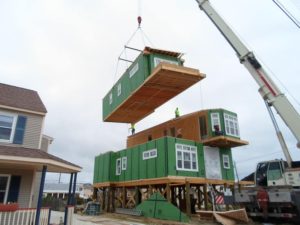
Modular Homes Vs. Manufactured Homes
People often confuse the two, it’s important to note that there are is a difference between modular homes and manufactured homes.
- Modular Homes: They’re built in modules, then assembled and placed on a permanent foundation.
- Manufactured homes: They’re built in one piece, you may place it wherever you want, but there won’t be a permanent foundation. Perks is that you can eventually take it with you if you decide to move somewhere else.
You can build modular homes in any style or size, just like regular homes, you can custom design them. Although the degree of customizability will always differ depending on the manufacturer. Furthermore, similar to traditional permanent homes, a modular home’s value will also appreciate with time.
When the home is about 70% complete, you can transport it to the job site and have it placed onto the permanent foundation. Later on, you can even add other features like the garages and decks
When were modular homes invented?
Modular homes, or prefabs, have actually been around for quite a while. This kind of fabrication dates back to more than a hundred years and started gaining popularity in the 20th century.
The reason why modular homes became popular is because of the second world war. Soldiers wanted to start their families as soon as they got back home.
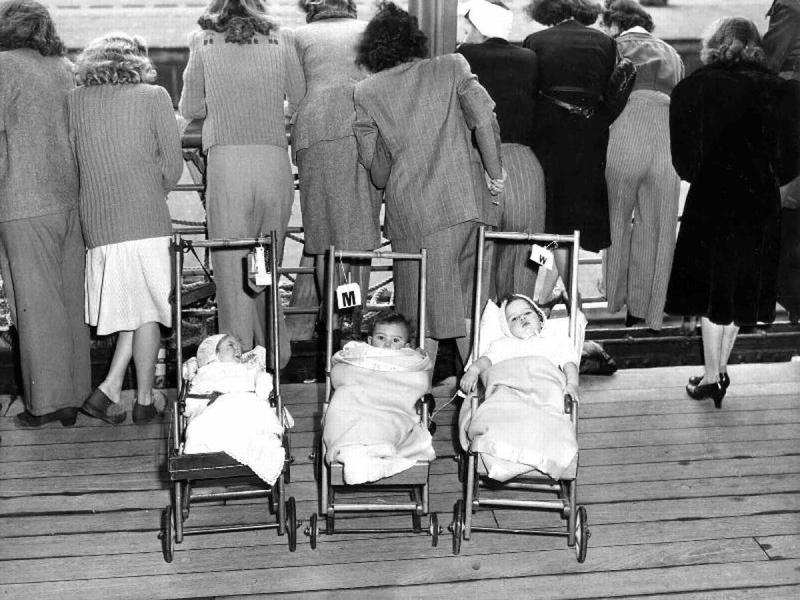
The demand for homes got so large that the marketplace couldn’t handle it with the traditional buildings. Therefore, people started looking for other alternatives that would help lower the cost and time for the construction of new homes, while still increasing the efficiency of the construction process.
They saw the modular building process as the best solution, simply because it highly increases efficiency, lowers cost and time of the construction of a new home
Compared to today, early modular homes were much simpler. There’s been a lot of progress in the modular homes over the years.
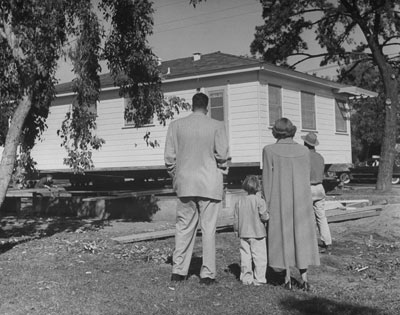
These days, you can transport and construct massive modules across the country.
The increase in the size of the modular homes has made it possible to include more customization options. You can now build a custom-designed structure solely for you. First, using modular techniques, the plan for the custom-designed home will be drafted. Finally, according to the width and height that you want, the assembly of the final structure will begin.
Modular and manufactured homes are very indistinguishable. In fact, the modular housing industry owes much of its invention to the manufactured home industry. The technological advancements have really improved the modular housing industry.
Modular home uses what kind of materials?
Modular homes started an affordable housing solution and have evolved over time, now they come in all shapes and sizes. They have fewer material requirements and less wasted during the construction process. Modular homes use most of the popular house building materials used in the construction of standard homes. Construction of modular homes mainly use the following materials for very good reasons.
- Natural Slate- This is a metamorphic rock that can last for more than a century. You can also make different shapes and sizes with slate. It’s 100% natural which means you don’t need chemical products to produce it, unlike concrete. The color and the characteristics of this natural slate do not disappear, unlike other artificial slates.
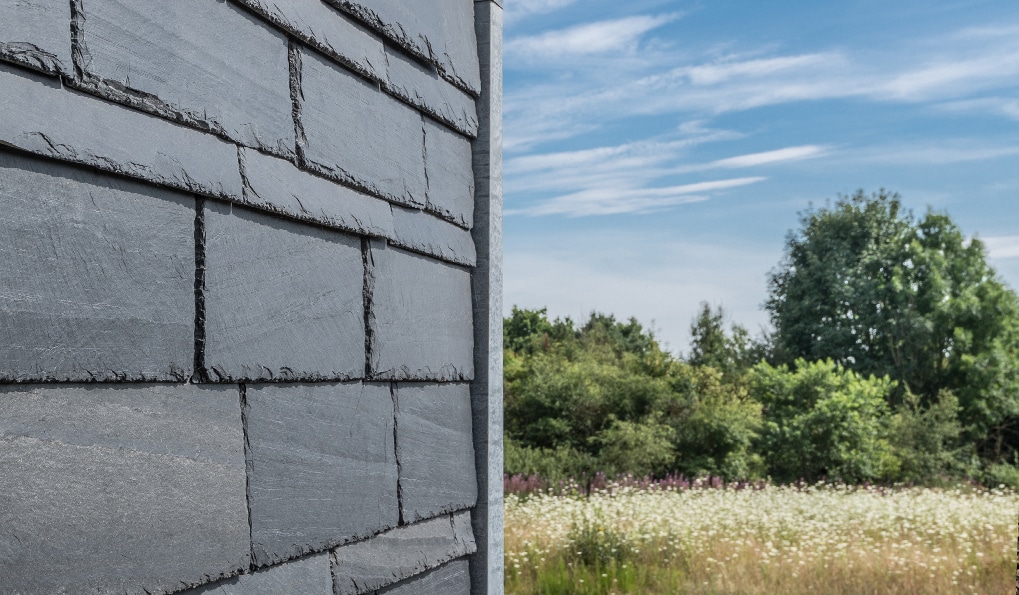
- Concrete– Durability and its ability to help achieve optimum acoustic and thermal insulation make it a top choice for building. Concrete leads to a building that can withstand almost everything, including hurricanes and earthquakes. Although you need to put in additional care to properly dispose of the toxic waste produced when mixing concrete.
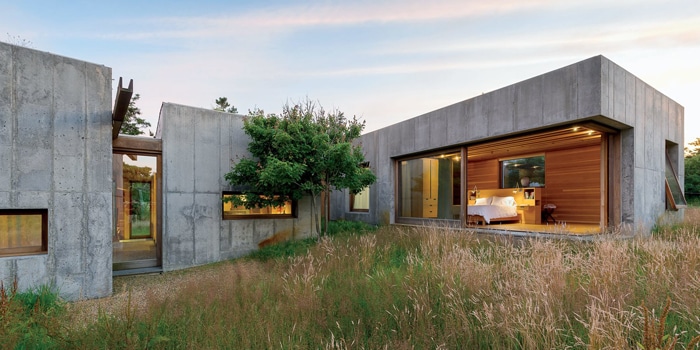
- Wood- It has always been used in the construction of different types of homes and is also popular in
modular housing. It’s lightweight and can support its weight properly. Another good reason for using wood is that it’s resistant to electrical conduction. Wood leads to improved insulation. In fact, it is superior to steel and other metals when it comes to insulation. Wood also absorbs less moisture, thus the air in the building will always be of good quality.
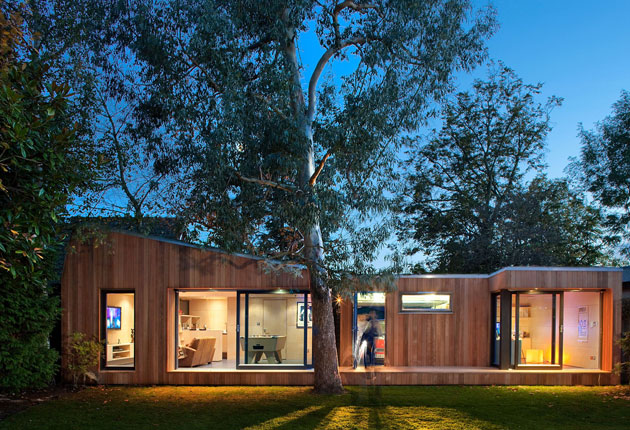
- Steel- It’s actually a newer addition to the modular housing. With steel, your best bet is to build it with a steel frame, steel wall panels, and a concrete floor deck. Steel leads to a more consistent structure and is fire resistant, which makes it possible for increased building height. A house built with steel materials can be dismantled and the steel materials can be recycled to be used for other purposes.
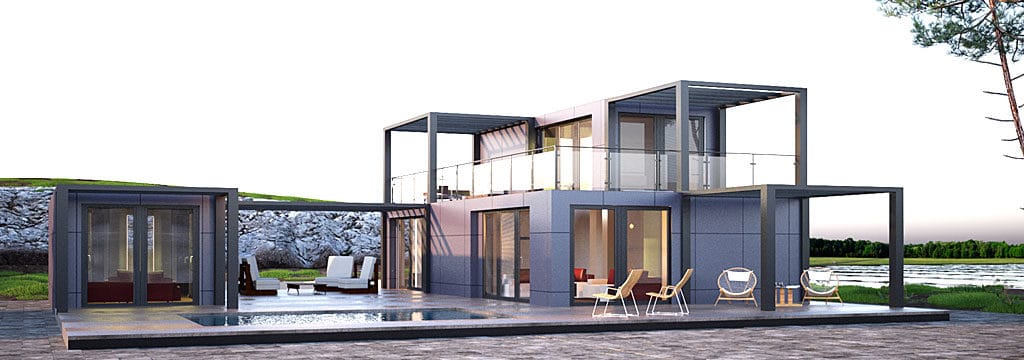
What type of modular homes are on the market?
Modular homes come in different styles and types. This is possible due to the fact that you can modify them to accommodate any design. You can customize them to include multiple levels and even a basement.
The following types of modular homes are popular on the market based on several factors including stories, floor plan popularity and the amount of space.
1. Ranch style
A ranch style modern home is also known as a rancher and is only one level high. The floor plans are based on L-shaped or sometimes a rectangular shape. Bonus is, you can modify this type of house in the future.
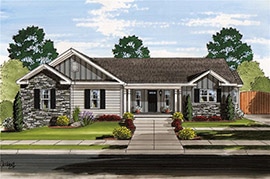
2. Two-story
This kind of modular home features two full height walls and a roof that is placed on the second story wall. Two stories require a small piece of land and you will have bedrooms that are well-separated.
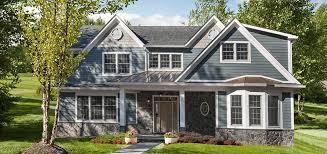
3. Cape Cod style
This style features a sharply sloping roof and can even fit in an attic.
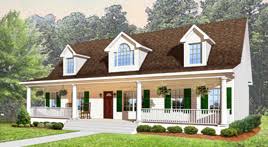
4. T-ranch style
– This type of modular home offers a single floor living and features a ranch style home with more space. It’s built with an extra module that extends from the rectangular ranch layout, thus tends to have a T-shape.
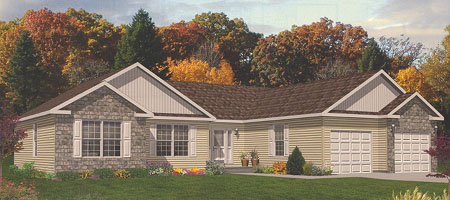
5. Green Modular Homes
The featured home of this article: We’ll get into heavy detail on how these homes systems work. Hopefully, you give it some good consideration for building one!
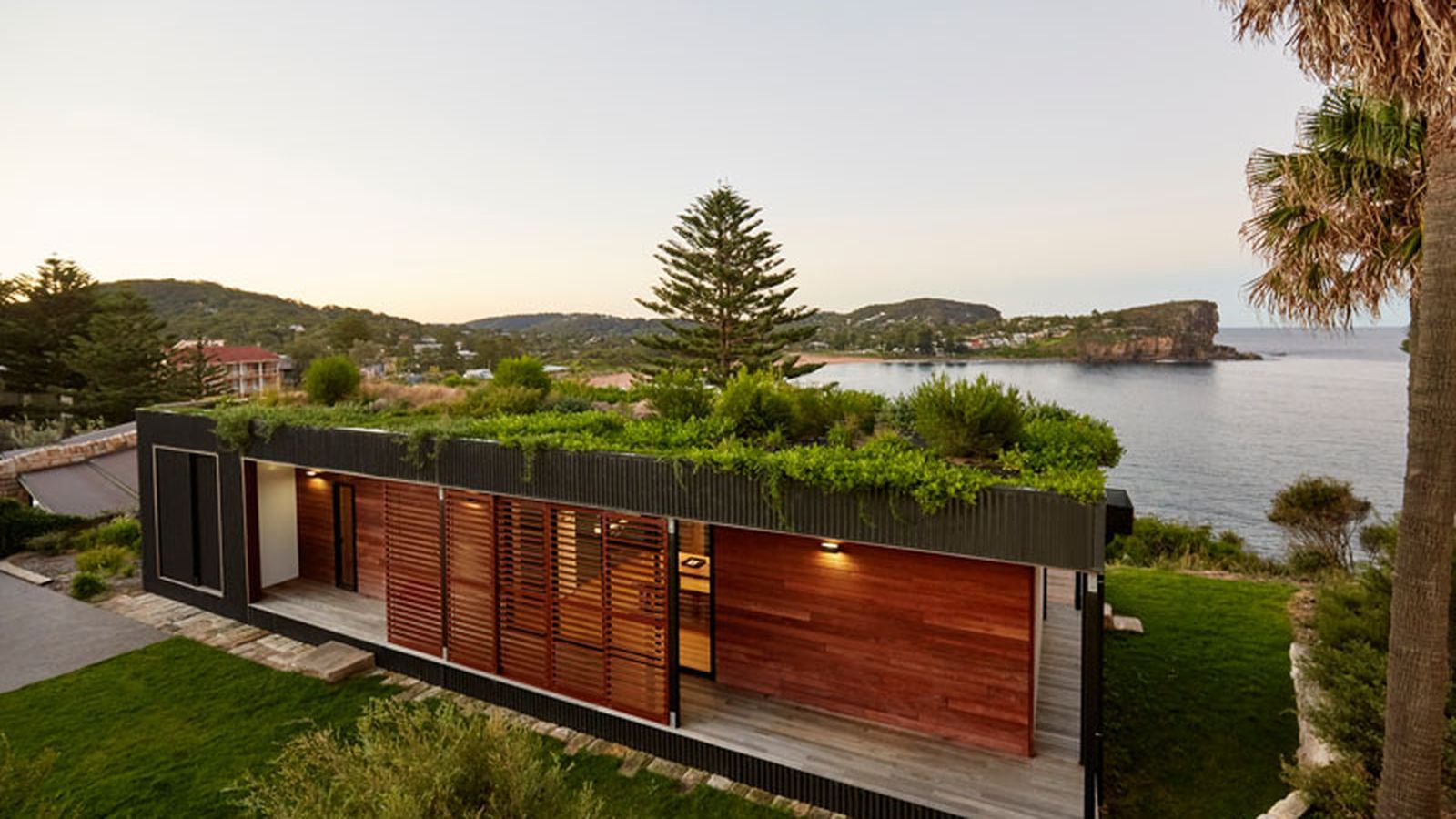
Why have an Eco Friendly modular home?
Modular homes include green building which has a lot of benefits to the people living in the house. A green modular home promotes healthy living in terms of protecting your physical and emotional well-being. To go green means you reduce the energy cost of your home and you’re friendly to the planet’s life support systems.
- Friendly towards your health – All of the products used to build your green modular home are safe and nontoxic. The green features help reduce the accumulation of allergens, humidity and air pollutants in your home thus promoting healthy living. Also, green homes are resistant to the growth of mildew and mold.
- Friendly towards the environment – The materials used in your green home are sustainable and even the whole construction of the building minimizes its impact on the construction site. This ensures that you preserve natural vegetation and topsoil around your property.
- Reduces Waste – Your house is built to recycle waste as much as possible, from composting to reusing greywater. Also, when it’s time to build your green modular home, builders will always commit to efficiently use resources and to cut on waste as much as possible.
- Reduces Energy Consumption – Technology used in your modular home ensure the use of your energy is as minimal and efficient as possible, by following sustainability guidelines.
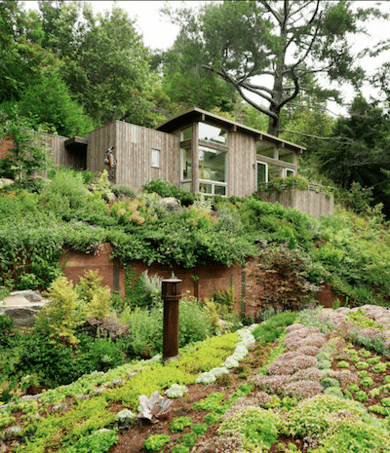
Green modular homes are built by making decisions that are friendly to the environment and are sustainable throughout the construction process. This ensures that there is minimal impact on the environment.
How does an Eco-Friendly modular home work?
Modular homes, also known as prefab homes, are the latest in green architecture and technology. They follow the passive house standard. This type of green architecture and technology involves zero emissions, solar panels, rainwater systems and the use of recycled materials. They are well known for their energy efficiency, with a goal of focusing entirely on renewable energy.
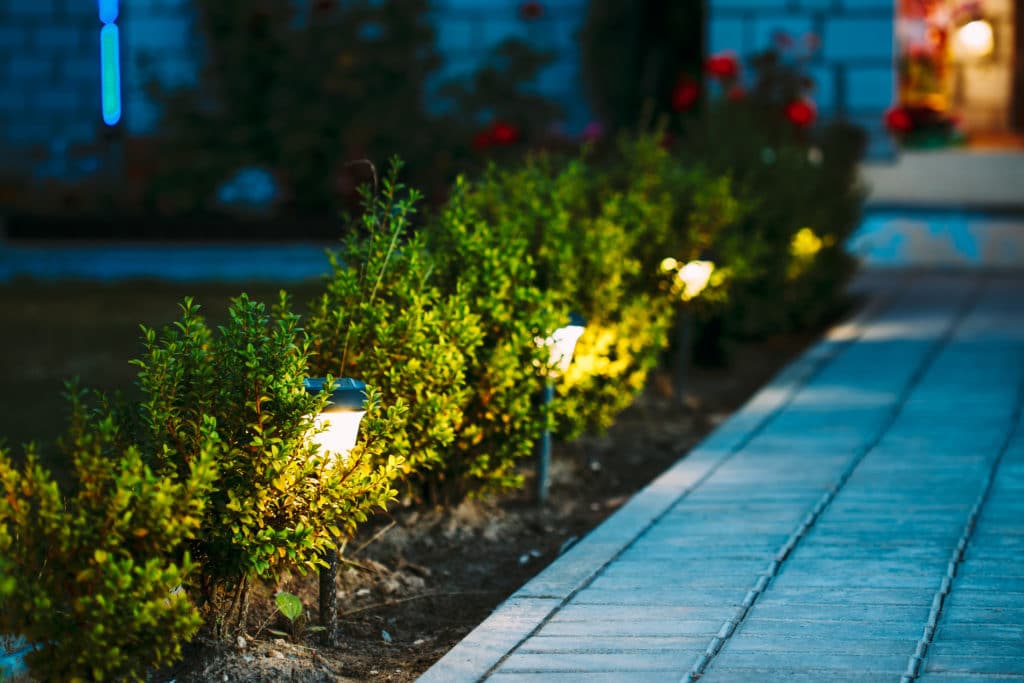
Green modular homes work in different ways including saving on energy costs, saving on water and providing healthier homes. Your modular home will be equipped with various systems that play an important role in ensuring performance is as designed.
Energy production
This kind of homes can be entirely self-sufficient. First, it will reduce your household’s energy consumption by a significant percentage and second, you will get almost all your needs internally, which means if you are very dedicated, you can basically be off the grid.
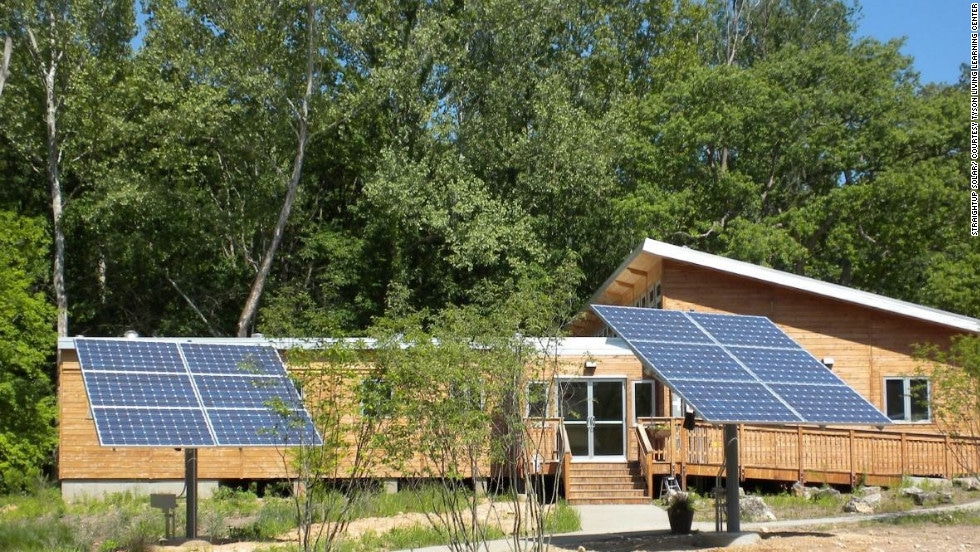
You can expect to see solar panels, small windmills or waterwheels (depends on location) that will provide your home’s electricity. These types of energy are sustainable and every country right now is advocating for their use. With all these in your arsenal, there is a reduced need for energy from regular grids. You may possibly even be off-grid.
Imaging saving your energy consumption by up to 72%. Now that sounds like a great deal.
Energy storage
For your modular home to work, it must also be equipped with energy batteries. This is where your appliances get their power from and that’s where you store excess energy from your solar/wind/hydro sources. This way, the homes can use the stored energy overnight.
Tesla, the massive electric car company, has been working on a giant high capacity battery with large storage. It’s called the Powerwall, and it could be quite useful for eco-friendly modular homeowners.
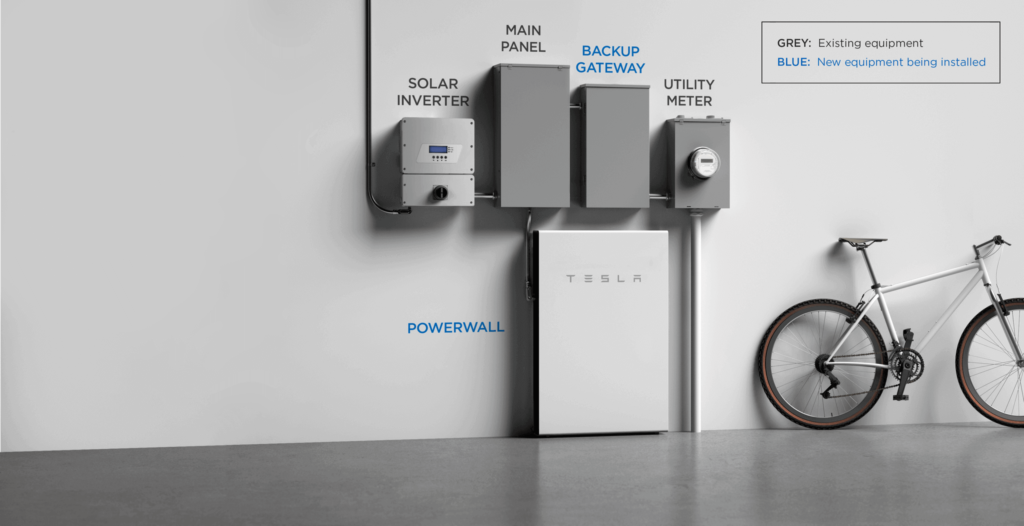
How is the energy consumption for an Eco-Friendly modular home?
Also, among the energy systems that are installed in the green modular homes are low-energy light bulbs. These can be the LEDs or CFLs which last longer and are more energy efficient, energy.gov explains it well.
You can expect much better insulation in modular homes. Better insulation contributes to a reduction in energy bills. Ensure that superior quality insulation materials are used to build your green modular home, it’s a top priority.
The windows and doors are the major points of concern. With better insulation, you do not need to keep the thermostat running when it’s cold because the house retains its own heat. You can also install sustainable sources of heat in your home.
Also, each and every modular home must be built in such a way that it has better natural lighting. Otherwise, it will not be categorised as a green modular home.
With better lighting, you won’t have to keep your light bulbs on during the day, since natural light can easily get into your house. When your light bulbs are kept off during the day, you get smaller energy bills. Anyone would want to lower their energy bills, right?
How do Eco Friendly modular homes provide for their electricity and water if they are off grid?
As aforementioned, modular homes can be installed with solar panels which help generate energy for use in the house. The excess energy can also be stored in batteries to be used later on in the day or at night. Therefore with solar panels and wind turbines, a modular house can generate its own energy even when it’s off-grid.
Modular homes can also be equipped with a system to harvest rainwater. This rainwater should be stored in a tank for use at home. Modular homes come equipped with water collection infrastructure and probably a treatment system which helps provide potable water. The water collected from rainwater and atmospheric humidity are treated and used in the house.
What kind of plumbing systems do Eco-Friendly modular homes use?
Green modular homes are installed with the green plumbing system. Green plumbing system means installing a plumbing system in a way that helps minimize water consumption and reduce heat loss in the pipes and saving energy. This type of plumbing system can also mean a decrease in chemical effects.
Properly built modular homes ensure improved sustainability of home and reduced carbon footprint. Areas that need water in a modular home are grouped together with the aim of reducing heat loss from pipes. This design involves shorter water pipes. In the typical homes, water pipes tend to be very long which mean that there is plenty of heat loss as the water moves from one area to another.
There are other systems that are installed in eco-friendly homes that help reduce the demand for water. They can be termed as water efficient fixtures such as water efficient faucets, showerheads and low flow toilets. This helps reduce water waste.
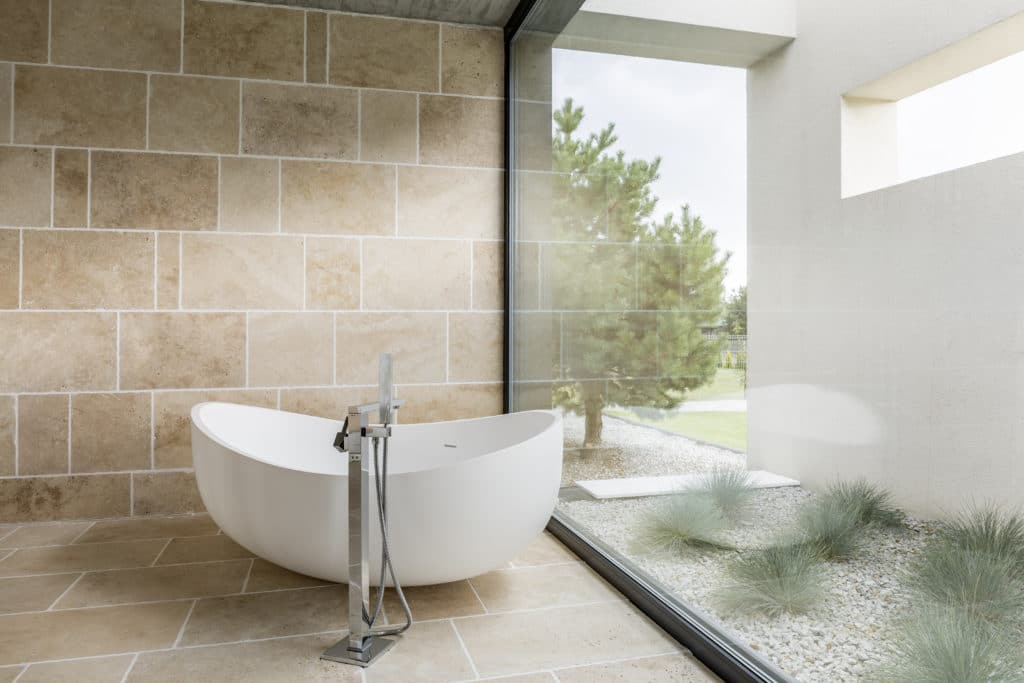
Don’t be fooled, baths in eco homes are also eco-friendly, remember that we will use the greywater to irrigate our garden and plants. As long as we are using natural soaps to wash, there will be no issues.
In the end, you decide if you want a shower or bath, if you want more information, Grist compares shower vs bath.
How do you build a green modular home?
Building a green modular home is easier and faster when you are using modern modular technology. It requires a special factory setting for the build. The building process must pay attention to energy efficiency, high-performance green construction, and healthier indoor living and sustainable practices.
Green building is all about ensuring there is more efficiency in the homebuilding sites in terms of usage of energy, water, and materials as well as minimizing the impact on human health and planet’s support system.
What kind of materials are used specifically to build Eco-Friendly modular homes?
Modular homes are built using sustainable materials. These materials are used for internal walls, insulation and roofs. Today’s homes are built using products that contain chemicals that are released into the air over time. When the chemicals are released into the air as gases, they pose dangers to the health of our ecosystem. These gases include formaldehyde or volatile organic compounds (VOC). Read more about them on Wikipedia.
Green modular manufacturers are always careful when choosing materials for the construction of homes. They go for materials that emit less formaldehyde and use paint, sealants and adhesives that emit little VOC.
The construction of eco-friendly homes helps create a healthy indoor environment. This is true because of the installation of ventilation systems in the house which gets rid of unclean air in the house and allows fresh air from the outside into the house. This can be achieved by installing energy star approved bathrooms fans and kitchen hoods that help get rid of smoke and unclean air to the outside.
Modular technology that is used today leads to the production of tighter homes. When we talk about tighter homes, we simply mean that all the components are joined together with strong fastening systems. Tighter homes not only lead to lower energy bills but also reduce the amount of dust, moisture, pollen and other outside pollutants that can get into the house. This leads to healthier homes.
Rooftop Gardening: Why you should consider it an essential part of your eco friendly modular home.
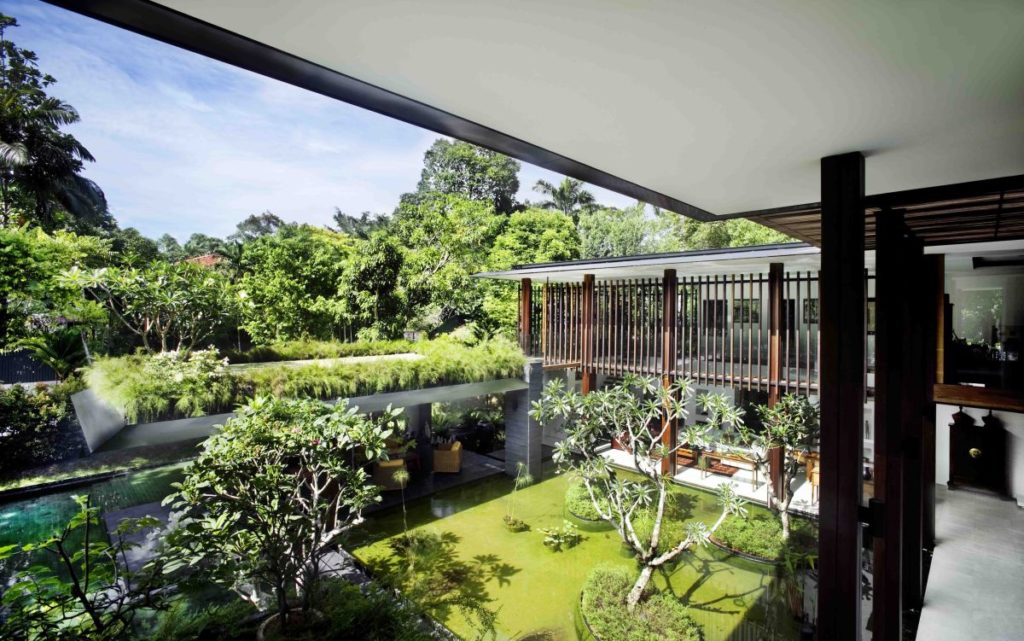
Rooftop gardening is a possible thing and there are many people doing it around the world, like in New York, Singapore and Norway. In fact, they have developed very efficient green building methods. You can grow a wide range of plants on your roof. There are different systems that are used for rooftop gardening such as green roofs, container gardening and greenhouses.
A properly designed roofing can grow anything from small flowers to huge trees. Modular homes can be built with specially designed roofs that support rooftop gardening. When you practice rooftop gardening, the plants or the trees will promote stormwater evaporation whereby the plants’ roots will soak up in the rainwater and intake for the survival of the plant. The water is later evaporated and returns into the atmosphere.
As a homeowner, depending on the type of plants you have on your roof, you may opt to install some simple irrigation system to water your plants during long periods without rain. Planting trees on your roof is good for the ecosystem because they will absorb unhealthy emissions from the atmosphere in order to survive and in turn give out pure fresh oxygen back to the environment.
Price Range: What can I expect to pay for a modular home?

Modular homes are usually low-cost houses. The prices of these houses vary depending on the size and style of the home. On average modular homes cost around $75 per square foot. You can find houses that cost less than $50,000.
Buying a house costs a huge amount of money. A lot of people do not manage to buy one. Purchasing a modular home, on the other hand, instead of a typical site-built home, can give you home sooner and much cheaper than you would otherwise. However, there are a few things you should consider before you decide to buy a modular home.
The pros of modular homes:
• Lower construction cost – Many typical site-built constructions often cost between $150 and $250 per square foot for only a standard home. Modular construction, on the other hand, has very low construction cost. It may actually cost you a fraction of site-built construction.
• Time – Modular construction is very efficient and results in a quicker build. The house comes with much of the assembly already done, thus you will have your house sooner.
The cons of modular homes:
• Personalization – Modular homes cannot be customized as much. If you want to have truly custom homes, then you should not opt for modular homes. Most of the modular home designs limit your customizations options.
• Huge transportation costs – if you are far from the factory. Modular homes are transported as assembled parts known as modules which are huge. If you live far from the factory it can be difficult to transport the modules to your location. Therefore, you need to be near the factory.
General Pricing of Eco Friendly modular homes
Many manufacturers give many and varied prices for modular homes. The cost of modular homes depends on several factors such as location, design, and size. If you are located in an area where real estate is very expensive, then the cost of a modular home will also be high in that location, the vice versa is also true.
The design also influences the cost of a modular home. The average cost per square foot for a typical modular home is about $76.80. The range can increase depending on the design you want. Perhaps, if you want luxury, the cost can get up to $230 per square foot.
Size is another important aspect to consider. Once you have decided on the price per square foot, you can determine the size of a house you can afford. The larger the size the more you will be required to dig deep into your pocket. For example, if you have settled on 2,000 square feet house at $150 per square foot, it will cost you $300,000. If you live in a market where it has a percentage above the national market meridian home sale price, you may end up paying more for the same eco-friendly house.
Conclusion: What makes modular homes better than regular homes?
Modular homes are built indoors and can be completed in a matter of a few days, unlike the regular homes. They must conform to specific rules and guidelines that are actually superior to those of regular on-site homes. A modular home will not experience delays that are usually common in the onsite construction.
Modular homes promote healthy living and ensure the construction process is friendly to the environment all through.
You have the opportunity to be more at one with nature, maybe grow a tree plantation with the extra room you have on your land?
The materials used in the construction of a modular home are nontoxic and safe, thus there will be no build-up of air pollutants in the house. Additionally, it will help you reduce energy costs.
Opting for an Eco-friendly modular home is a smart choice, most people need a lot less space than conventional homes provide, and in the end, you will pay a lot less for a modular home.
You can bring the home to any location, this is especially nice if you have a piece of land without a home that you’d like to live on.
Eco Friendly modular homes are smarter in almost every way:
- You save energy by using natural light and accumulating power through solar and wind. Heat is saved by properly insulating walls.
- You save water by using low flow faucets and reusing your
greywater. - You live in harmony with nature by having a garden on and around your home, thus providing fresh air and some level of food sustenance.
- Your carbon footprint is much smaller than regular homes since the building materials are carefully chosen and non-toxic.
- You can benefit from reduced costs if you choose a smaller home size that can still meet all your basic needs.
I hope you learned enough information that will help you make a decision when it comes to buying your next home. As for me, I’m already convinced, I’m going for an Eco-Friendly Modular Home!
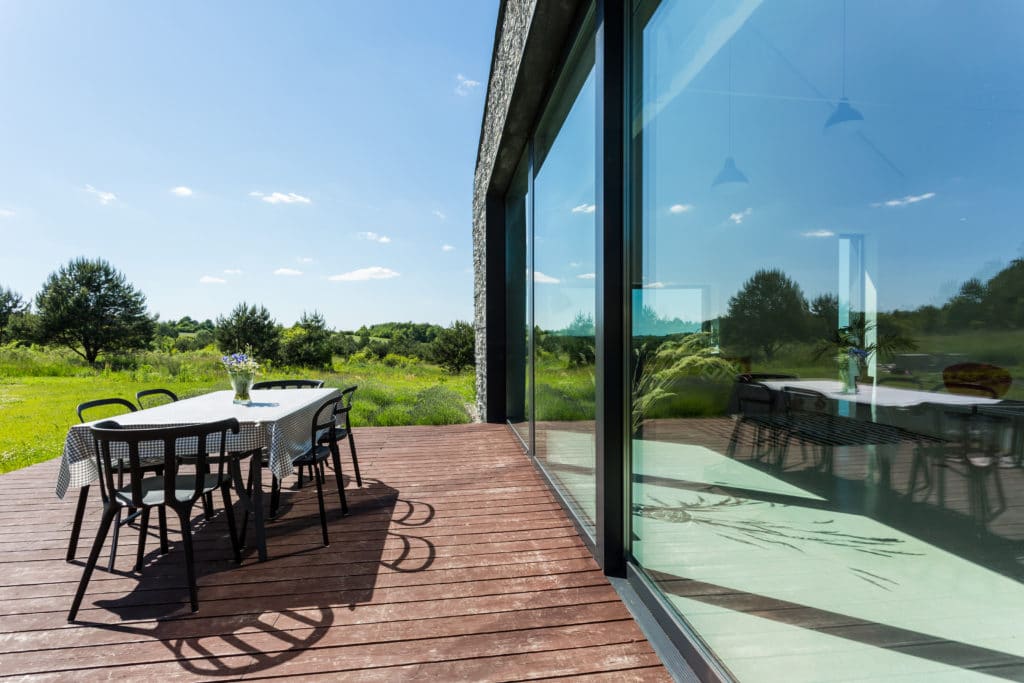
Now the question I’m asking myself…
How come I didn’t know about modular homes before?
Bonus!
Here are some companies you can look at that make prefab/modular homes:

Katus: For those of you in Europe, Katus specializes in wooden modular homes. You can find even more info about Prefab homes on their website.

nHouse: Based in Peterborough England, they provide spacious, affordable and contemporary homes, each hand-crafted using the highest quality materials. Can be delivered anywhere.

Green Magic Homes: They specialize in small eco homes, available for purchase in the USA, Europe & South America. Their patented homes are brilliant and provide top-level sustainability.

Connect-Homes: Simple, efficient website easy to navigate. 90% of the house built in the factory, connect homes’ techniques ensures that delivery costs remain low.

Plant Prefab: Based out of California, they empower individuals, architects, and small developers who want to build their own projects – and who want an efficient and reliable solution.

Slate Homes: They have a unique look, a style incorporating raw materials such as iron and brick mixed with dark woods. Worth a look.

Coodo: Mobile mini modular homes, if you have the wanderlust and cant stay on place for long, these might be for you.

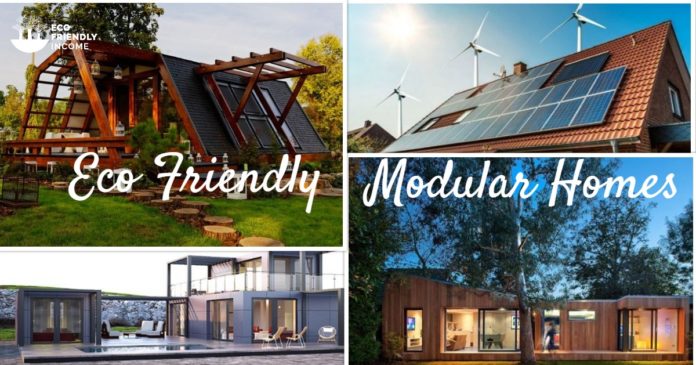

During times like this, Eco-friendly homes are essential, you are not just saving money but you are also helping the environment.
Very true Joseph, and think of the current pandemic. Wouldn’t being nearly or completely self-sufficient such an advantage right now?
This concept is very good which give us information regarding the eco friendly modular homes in detail. It is a pleasure worth reading this article. I enjoyed reading this article and would suggest others to come In this particular blog and get all the information regarding it.
Thanks for the read Mr./ms. Ngaruawahia! Please do recommend